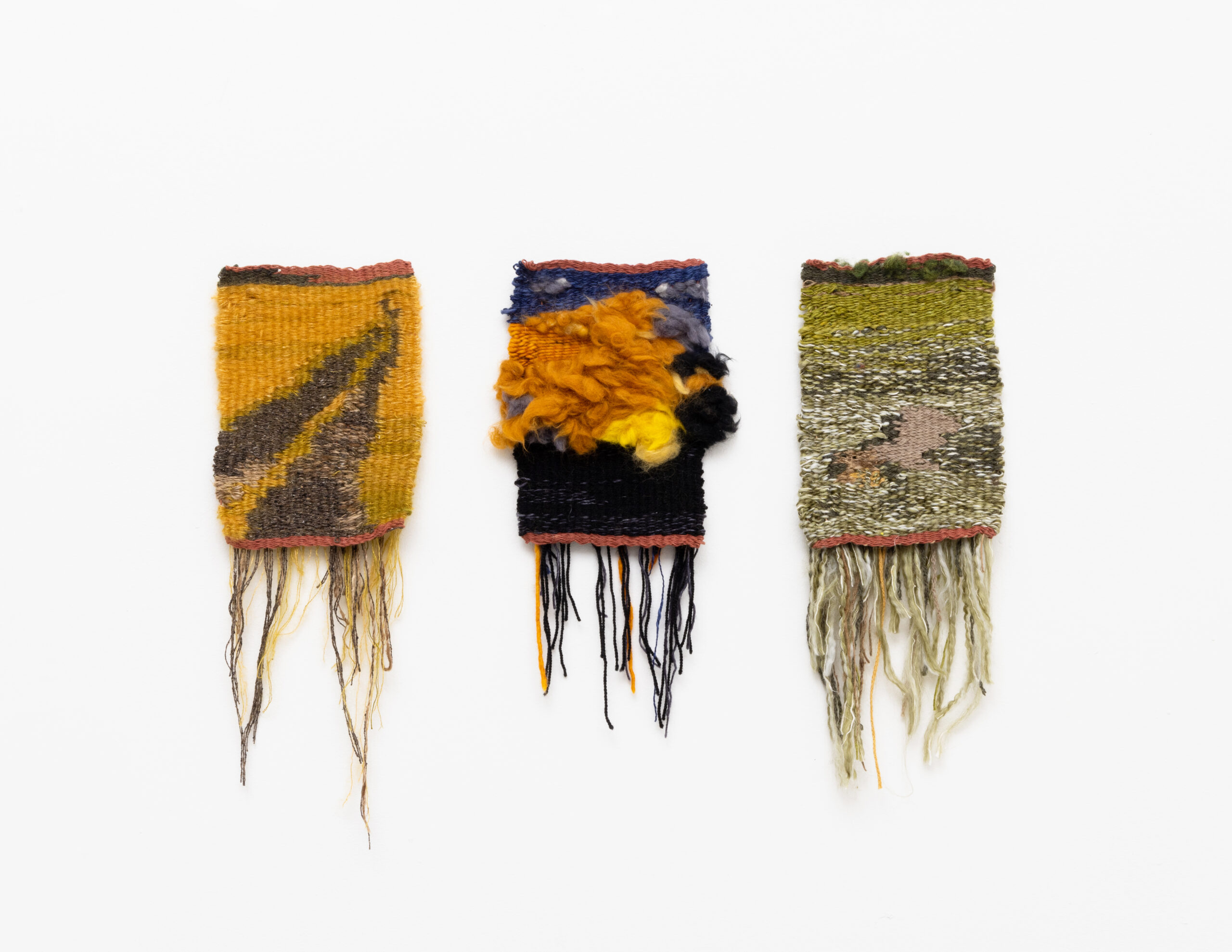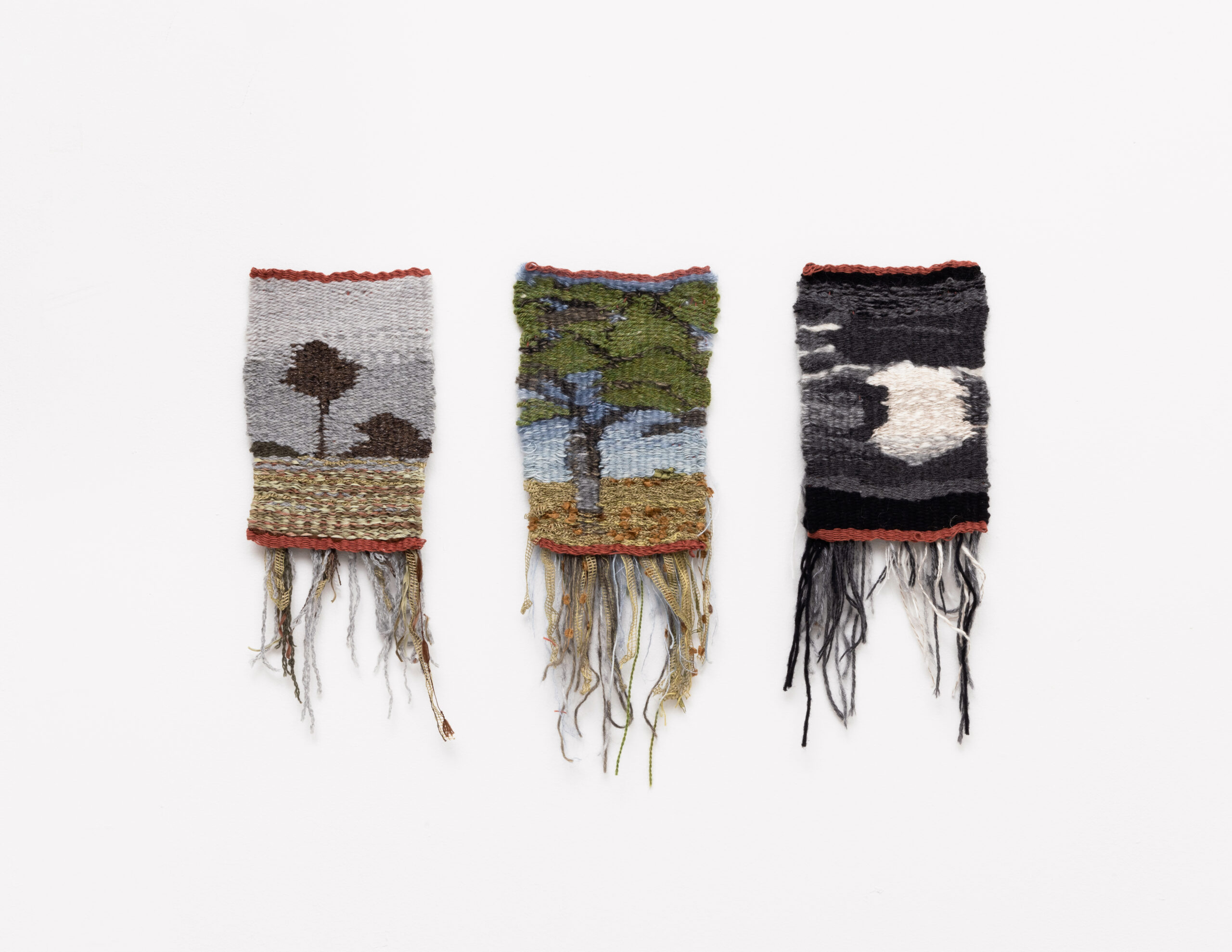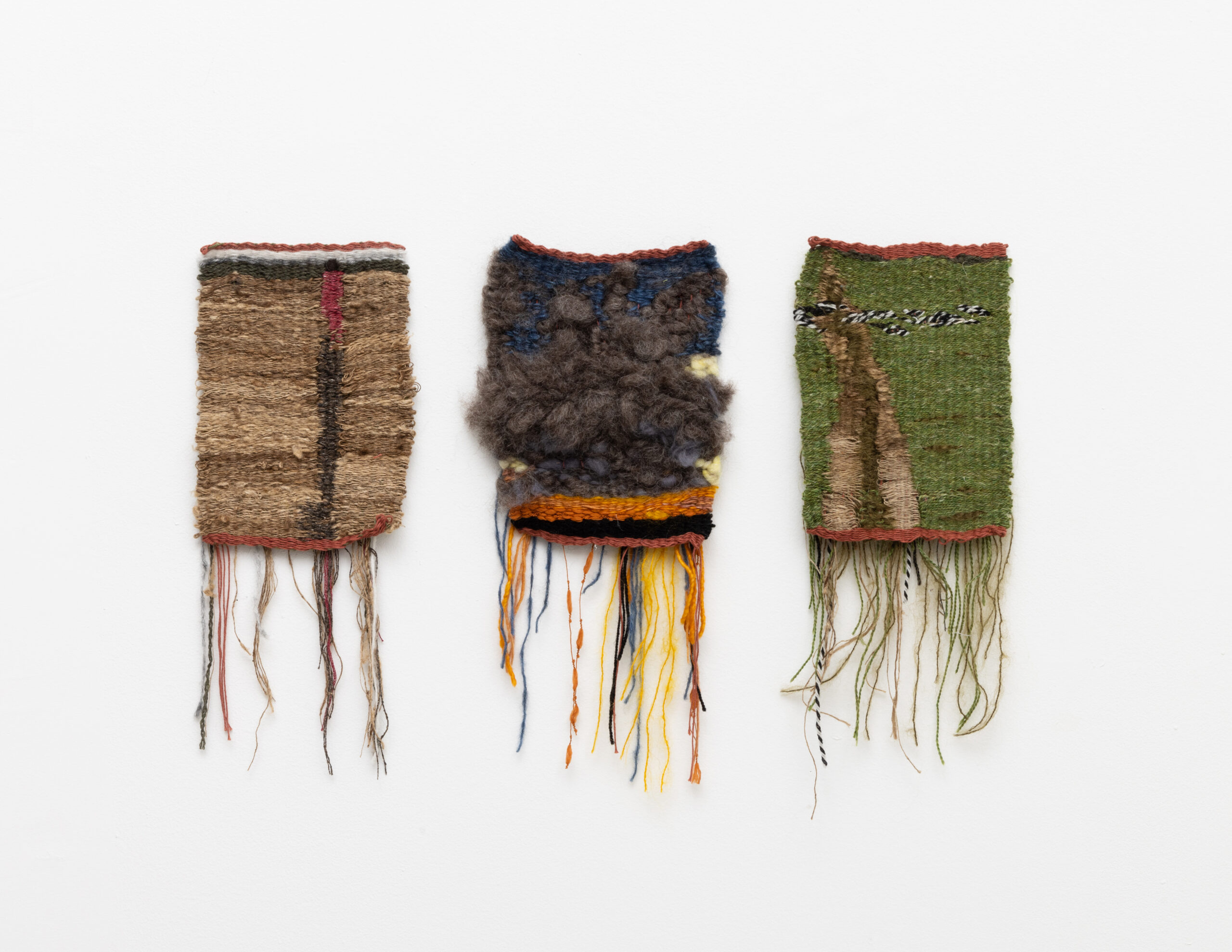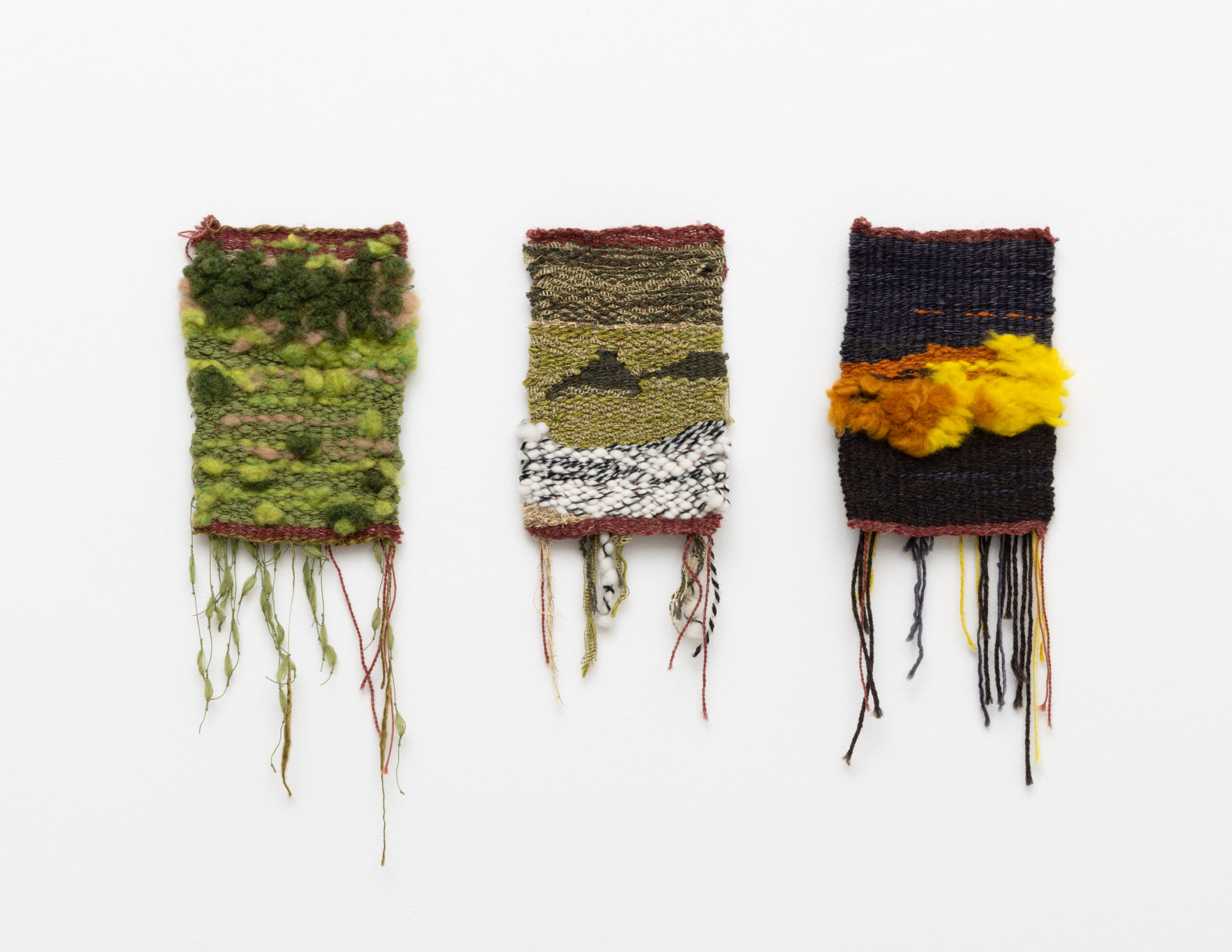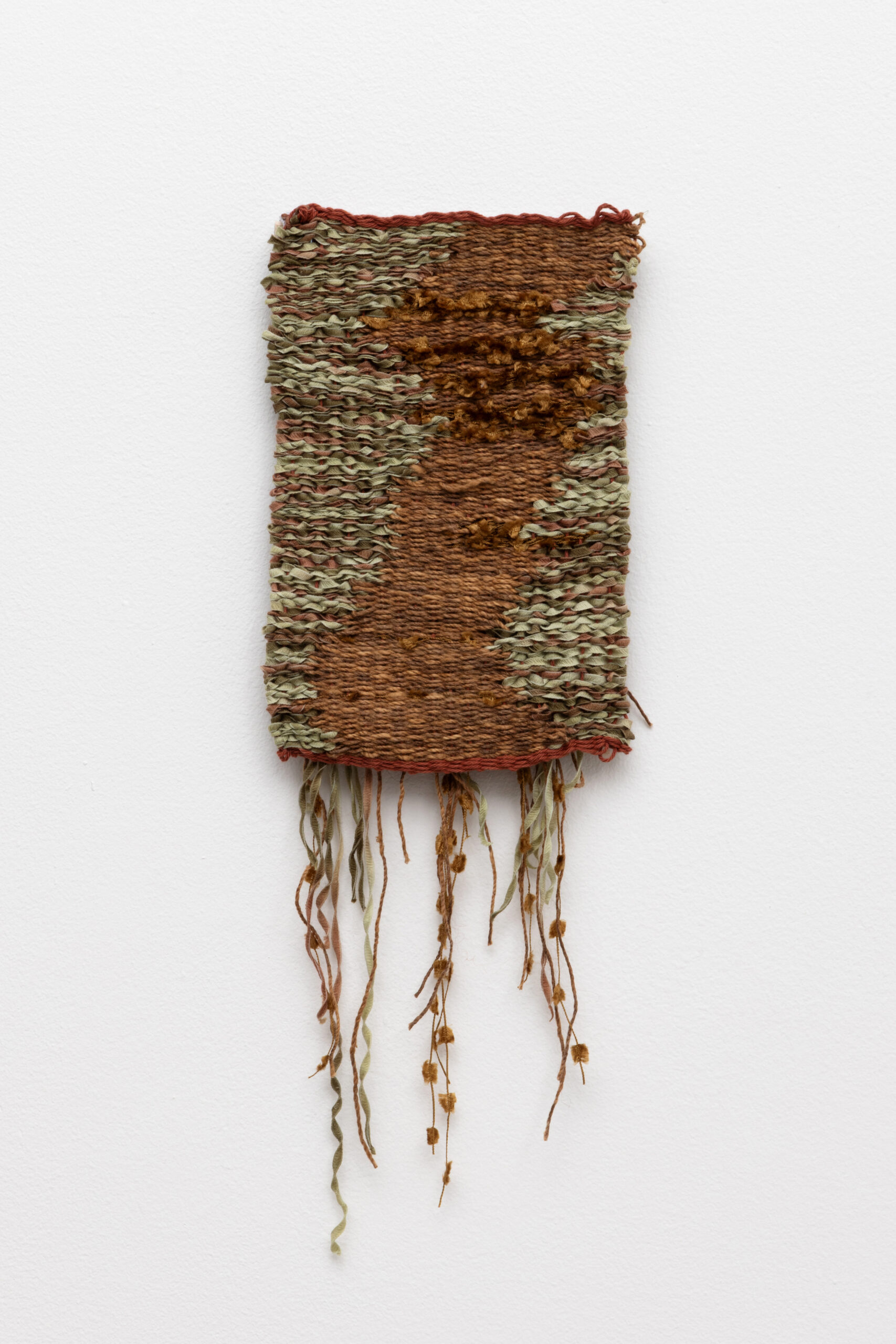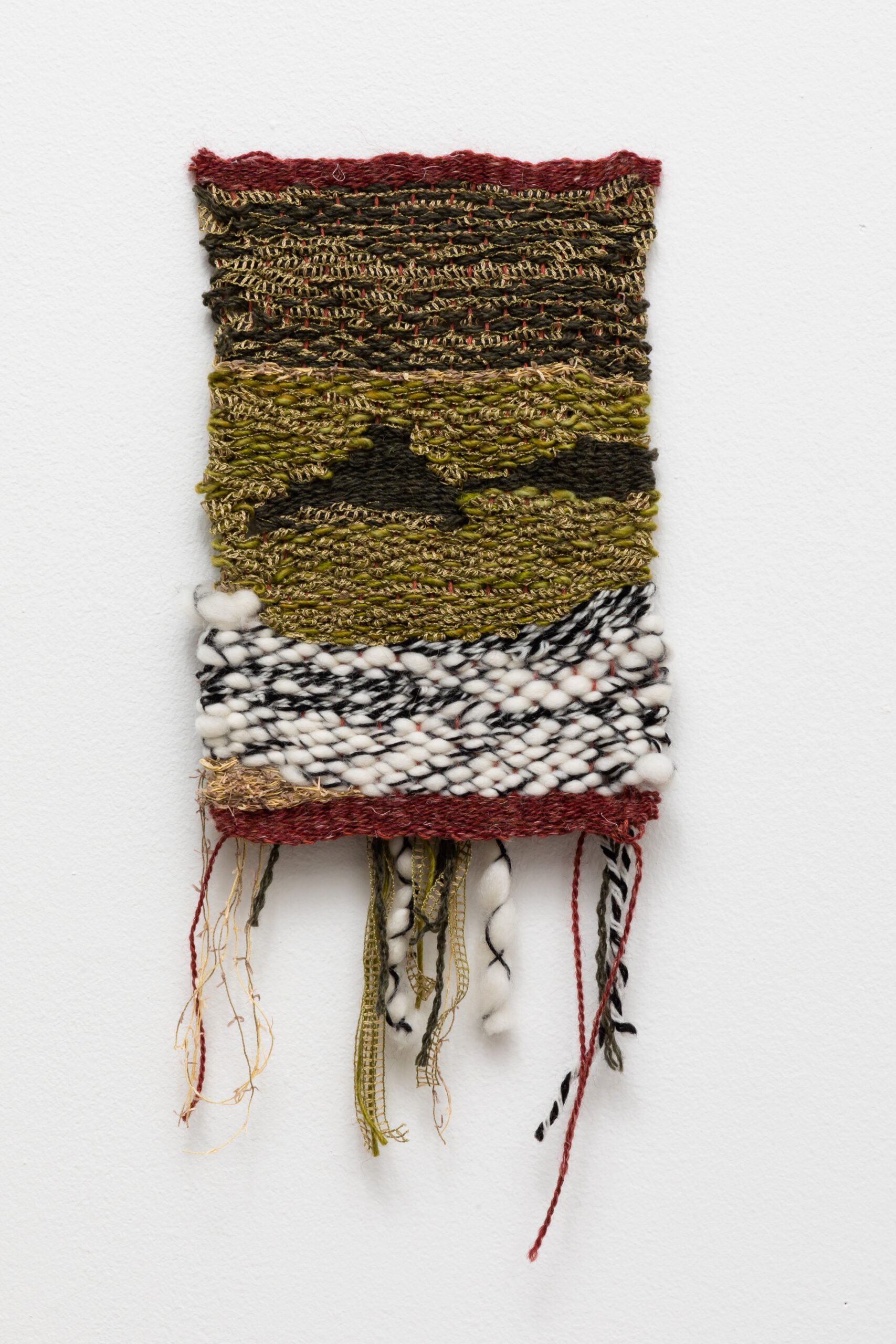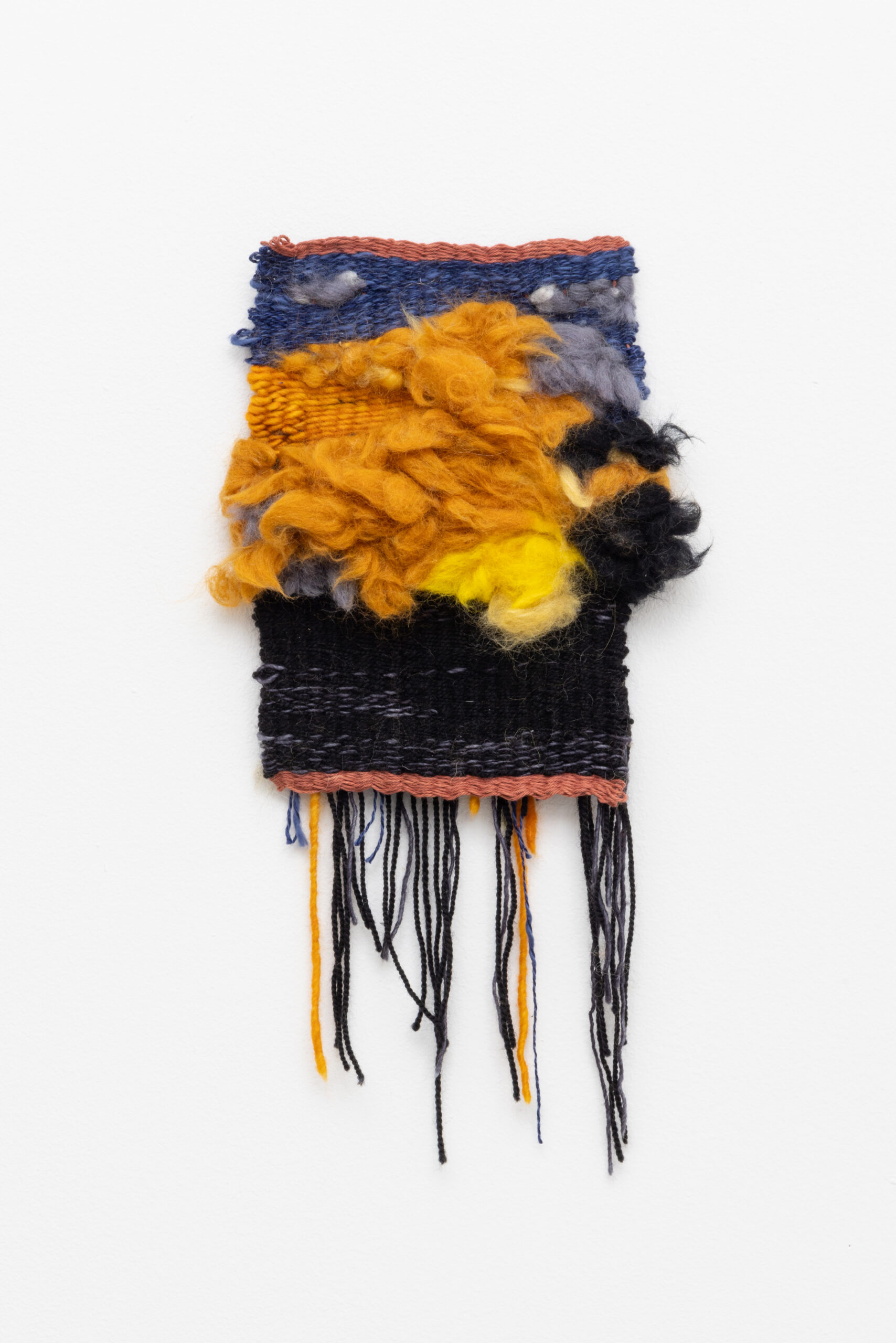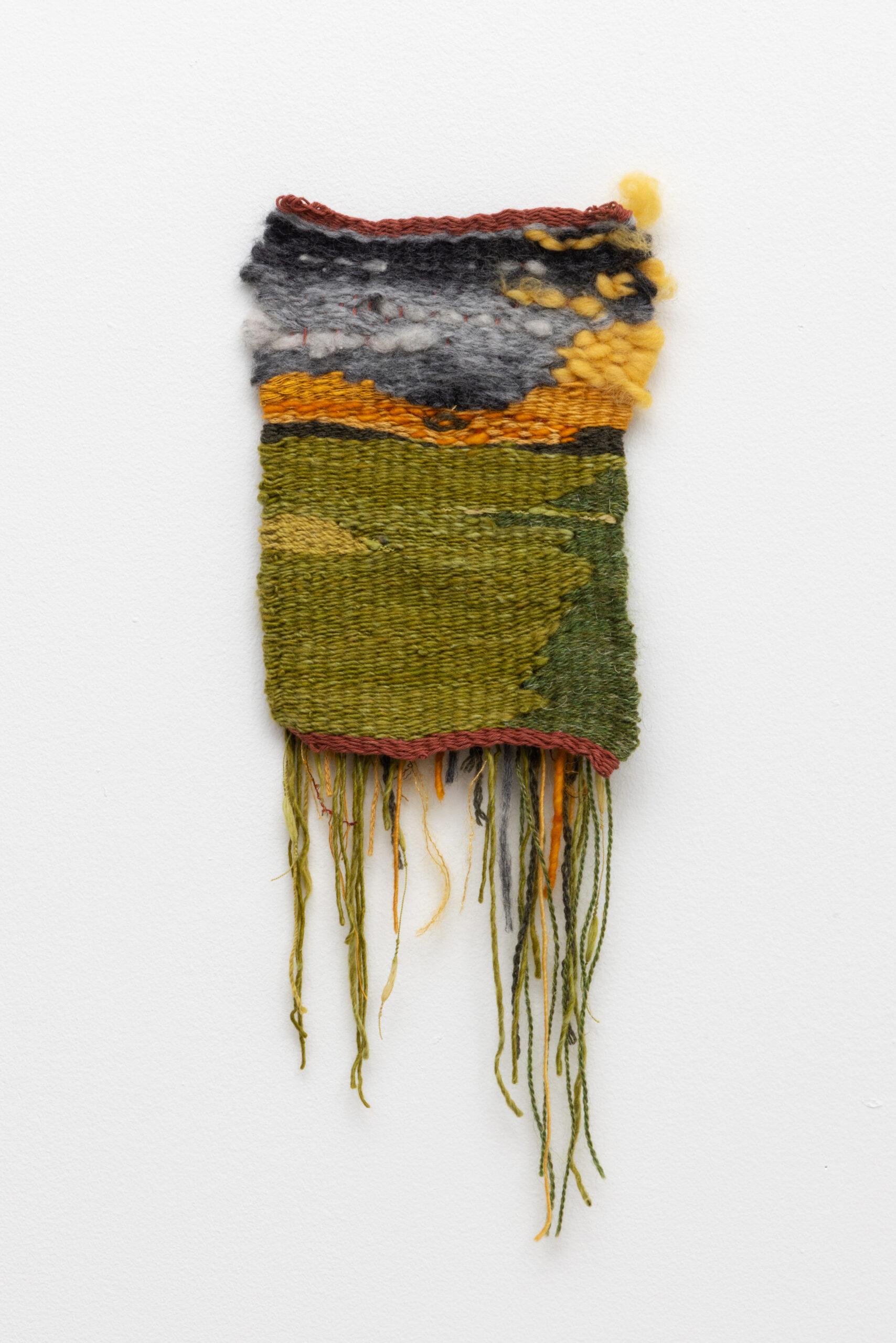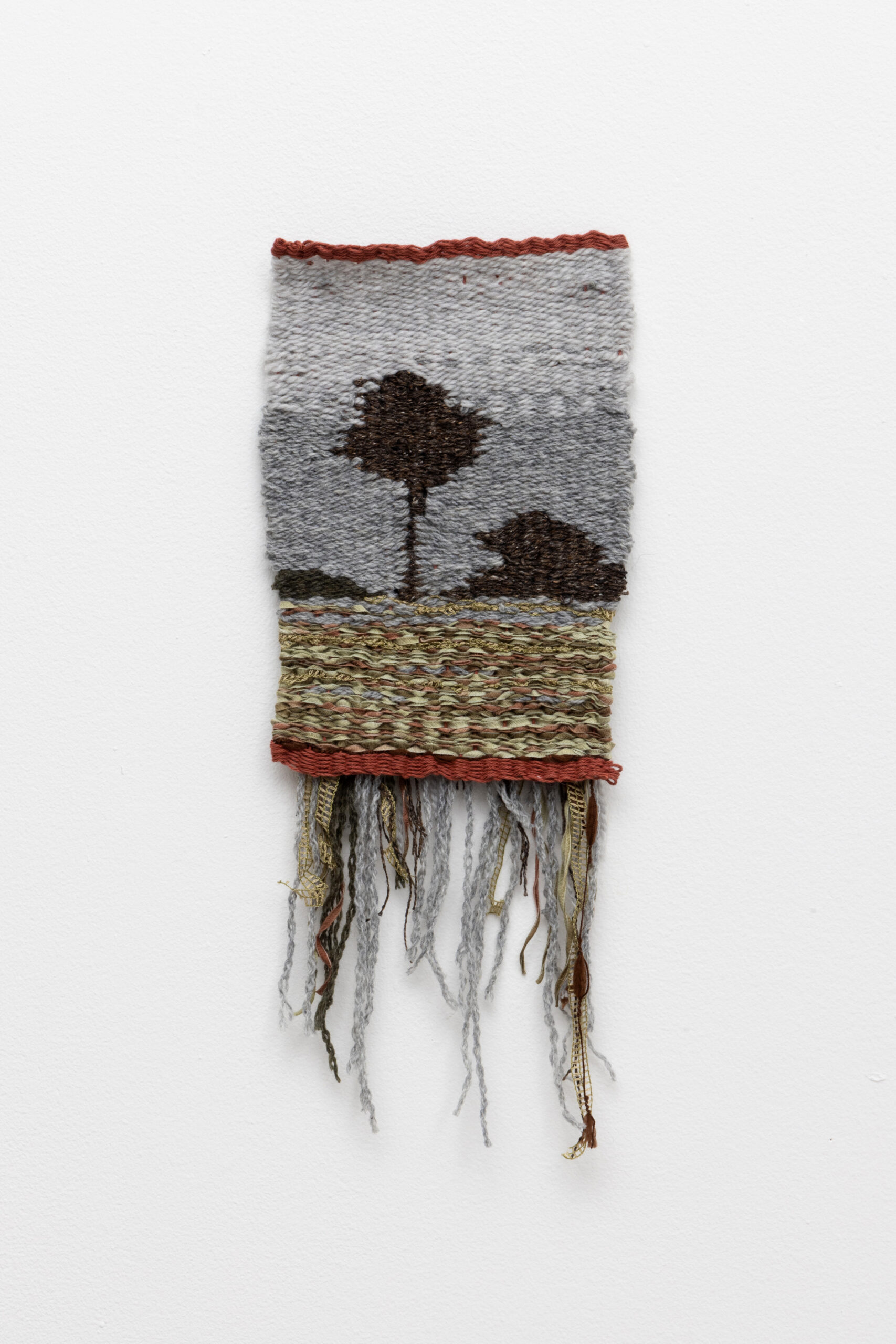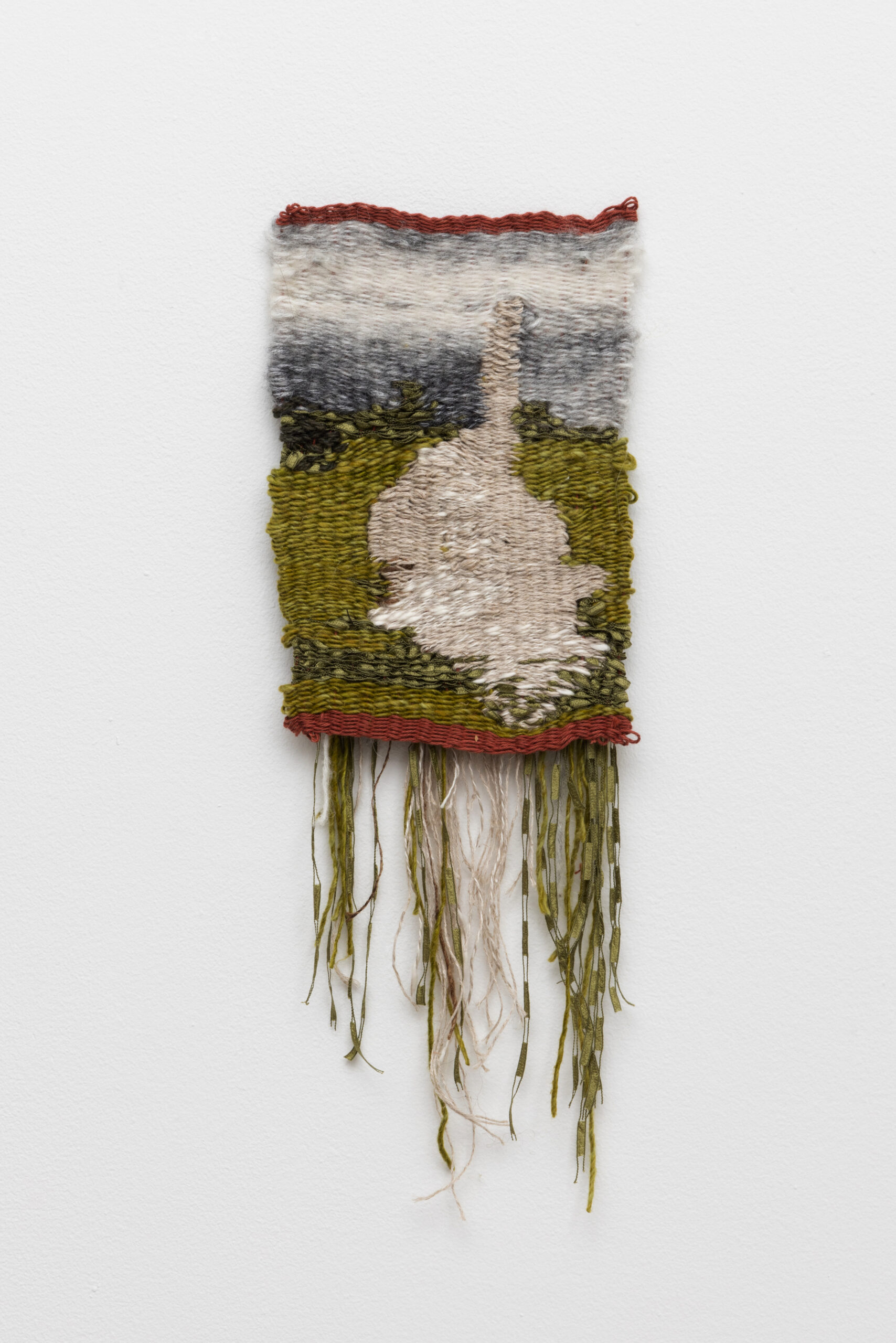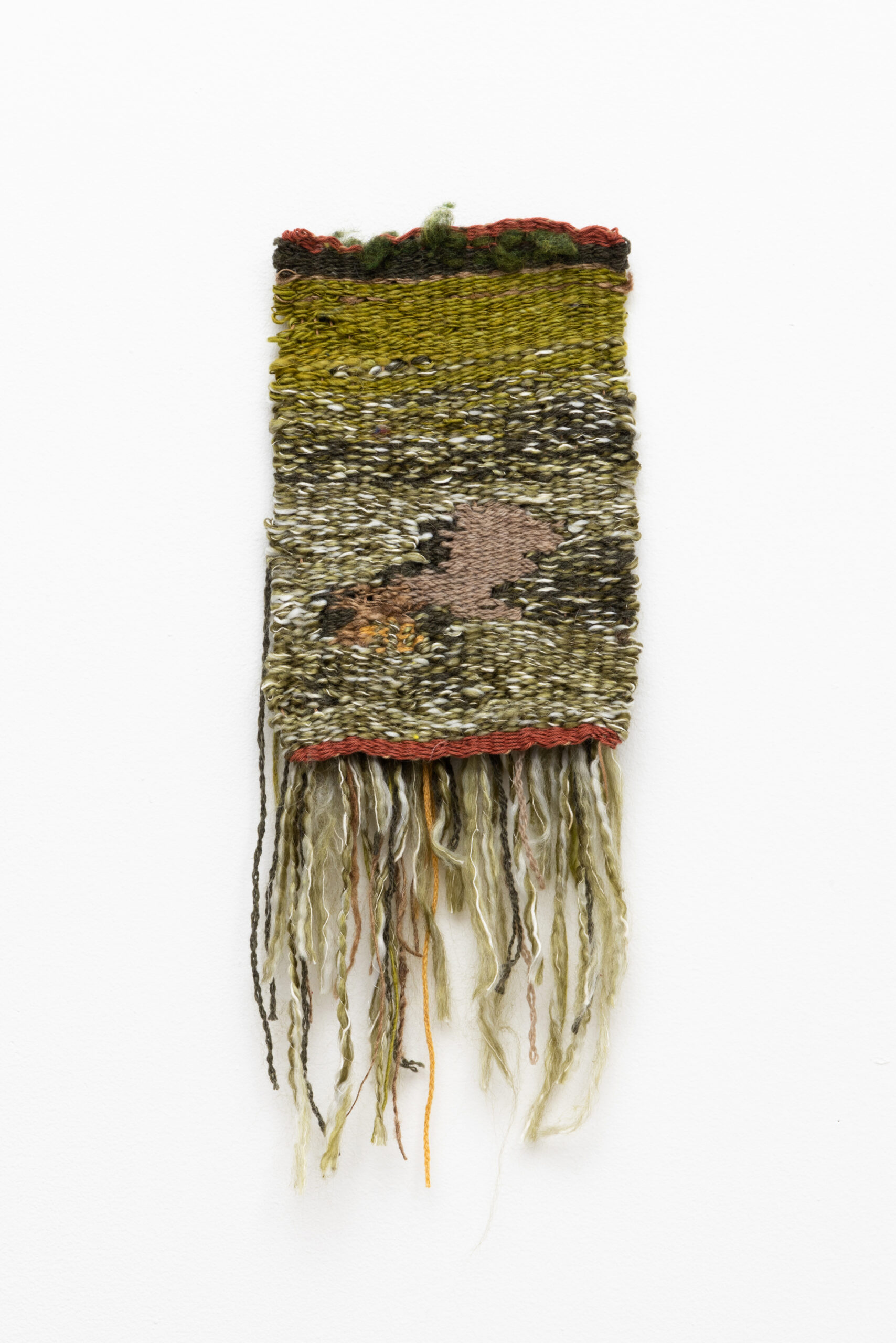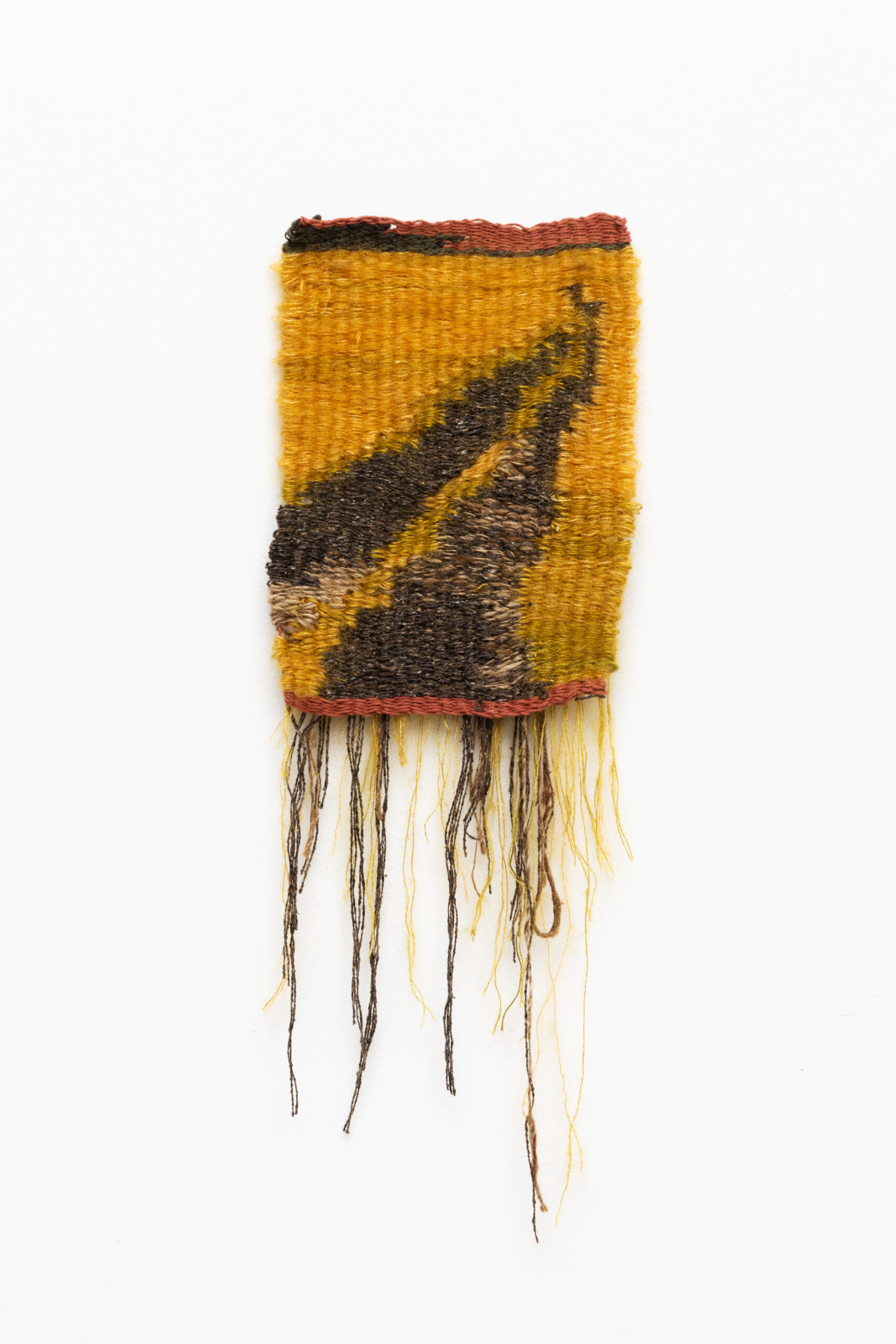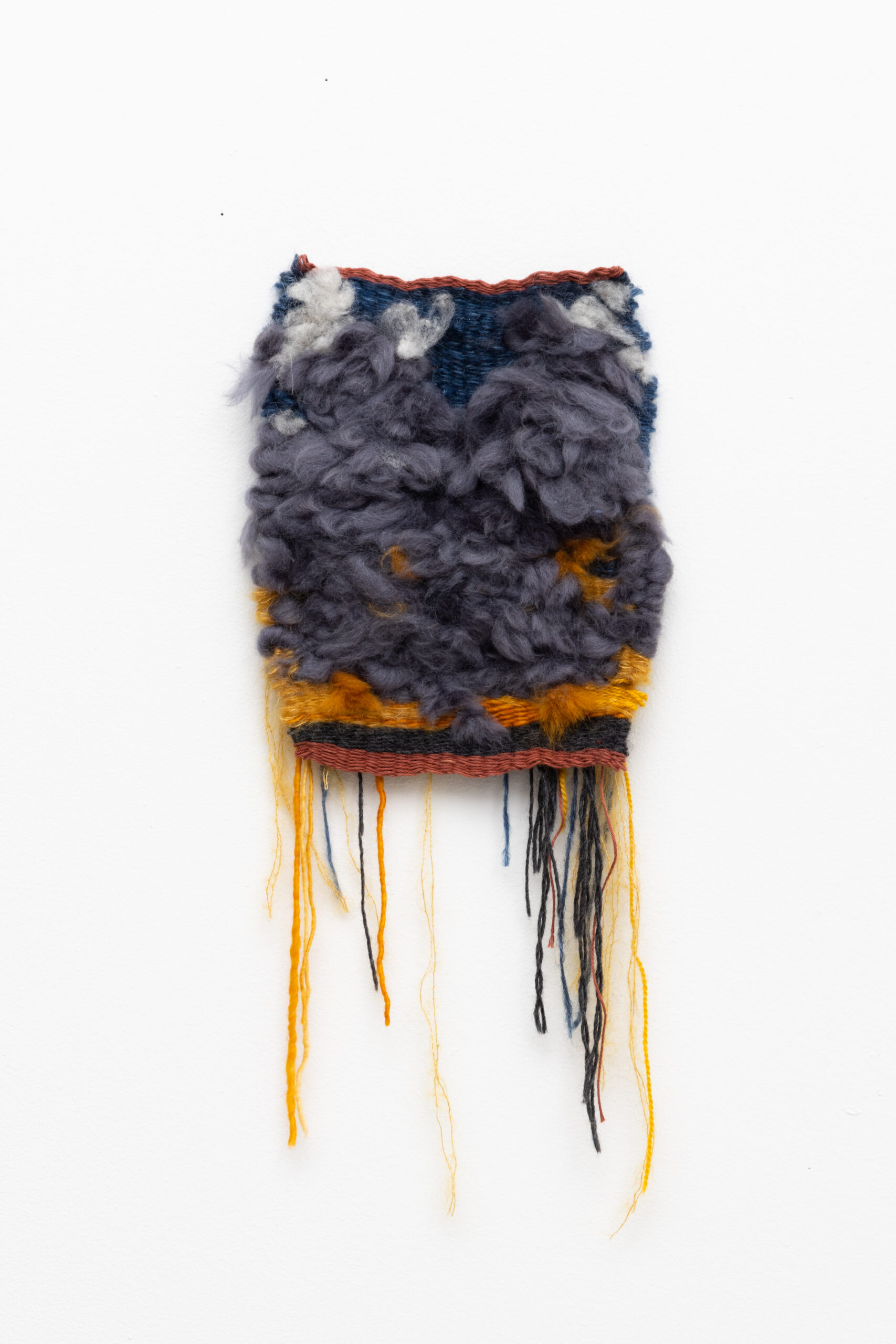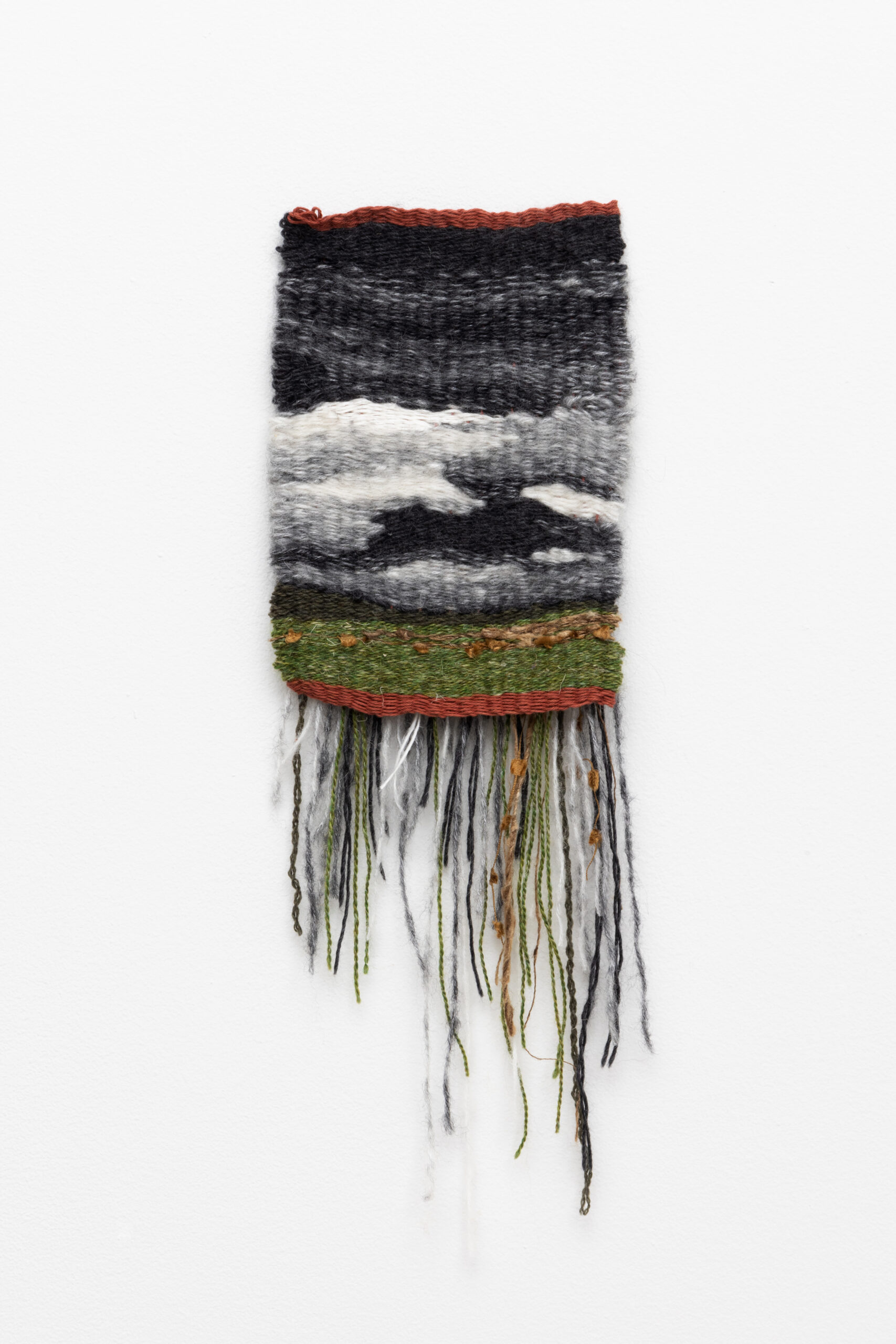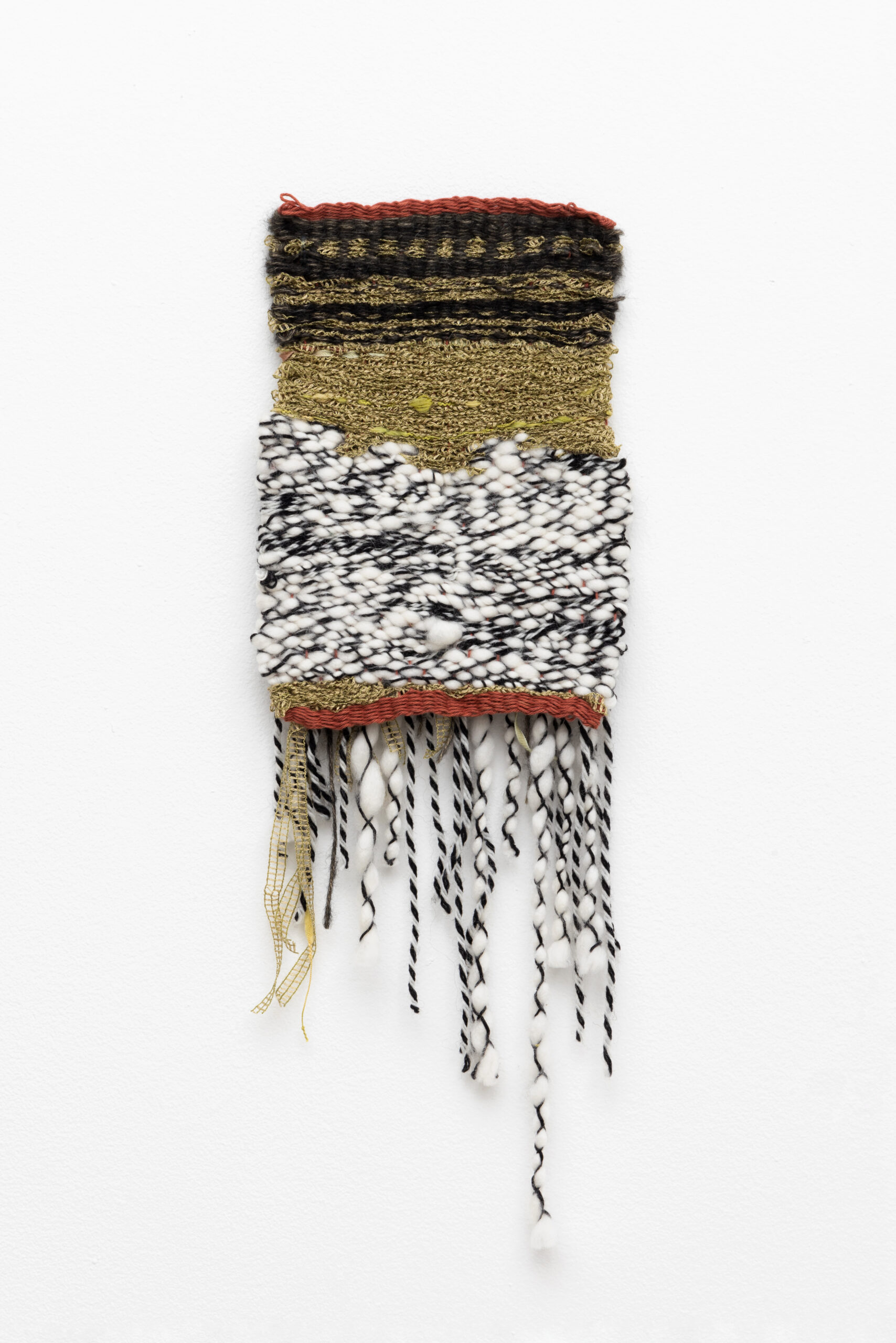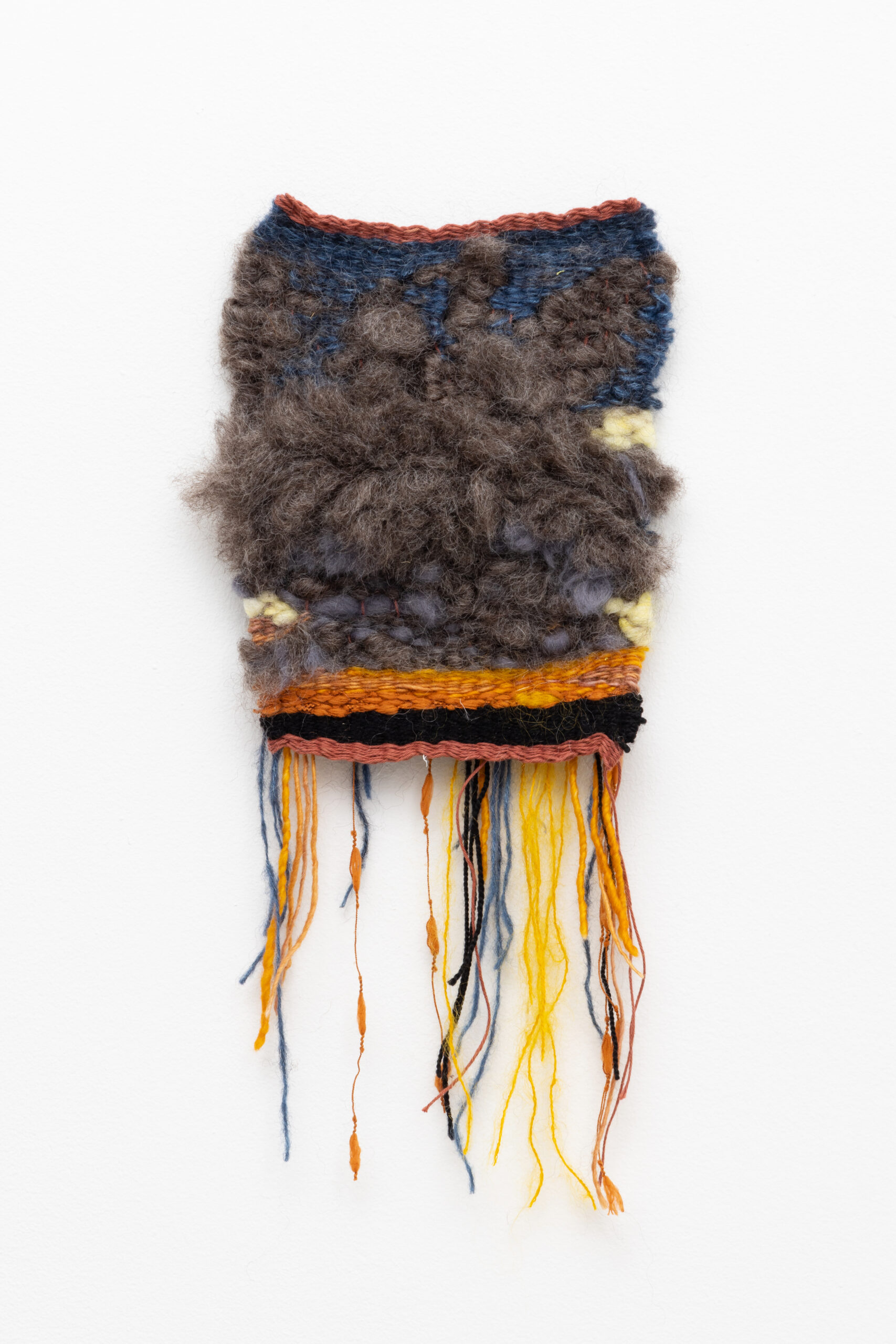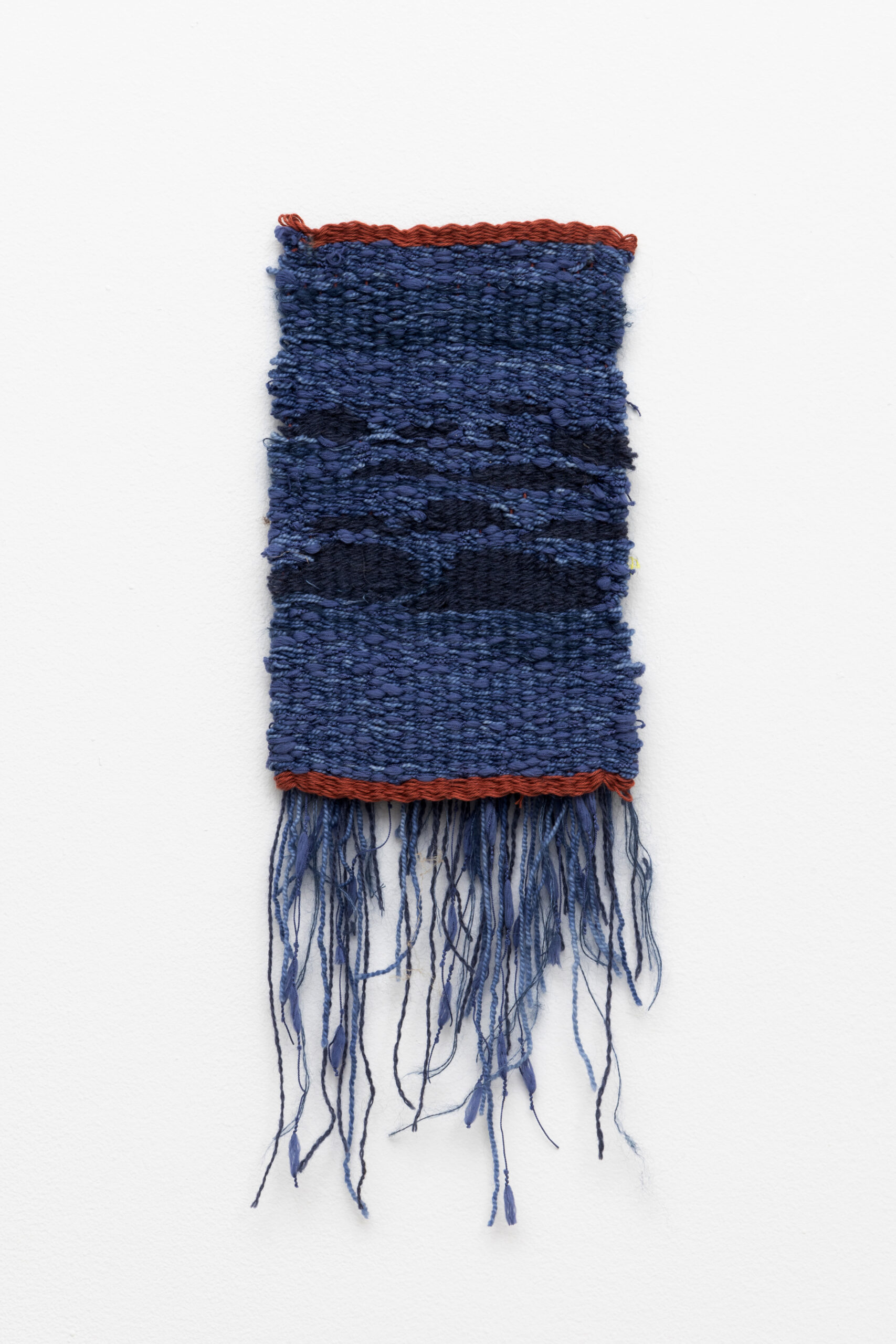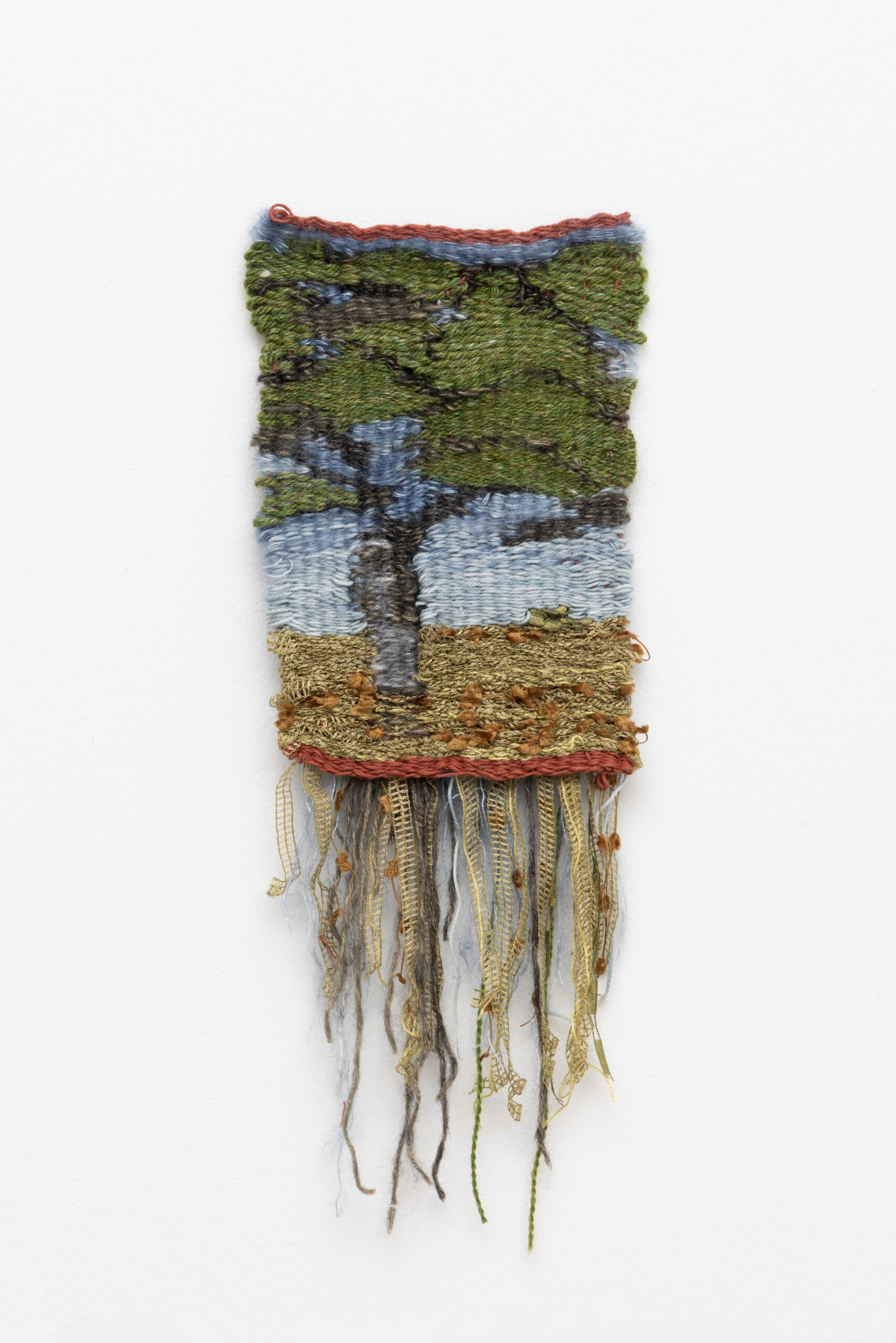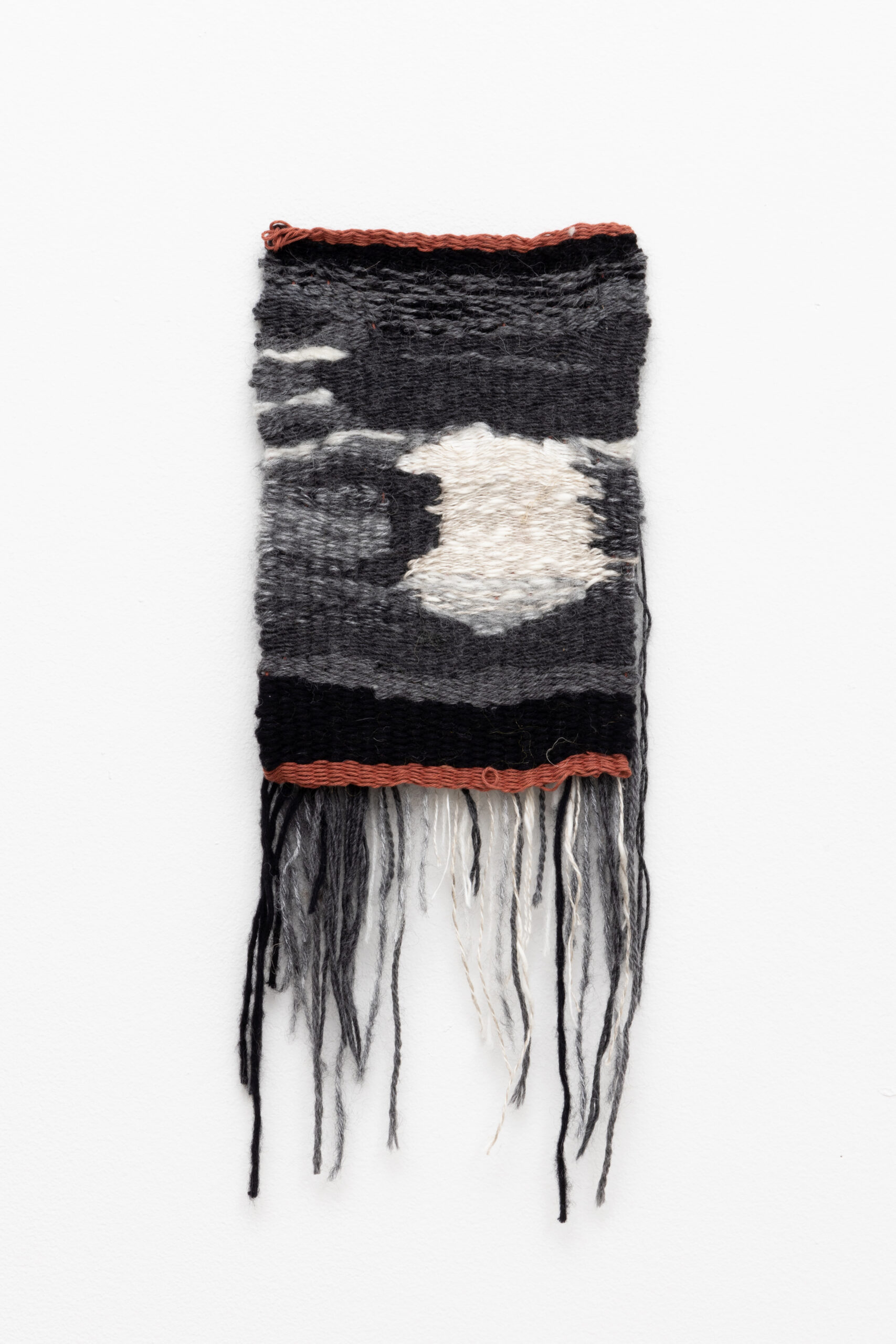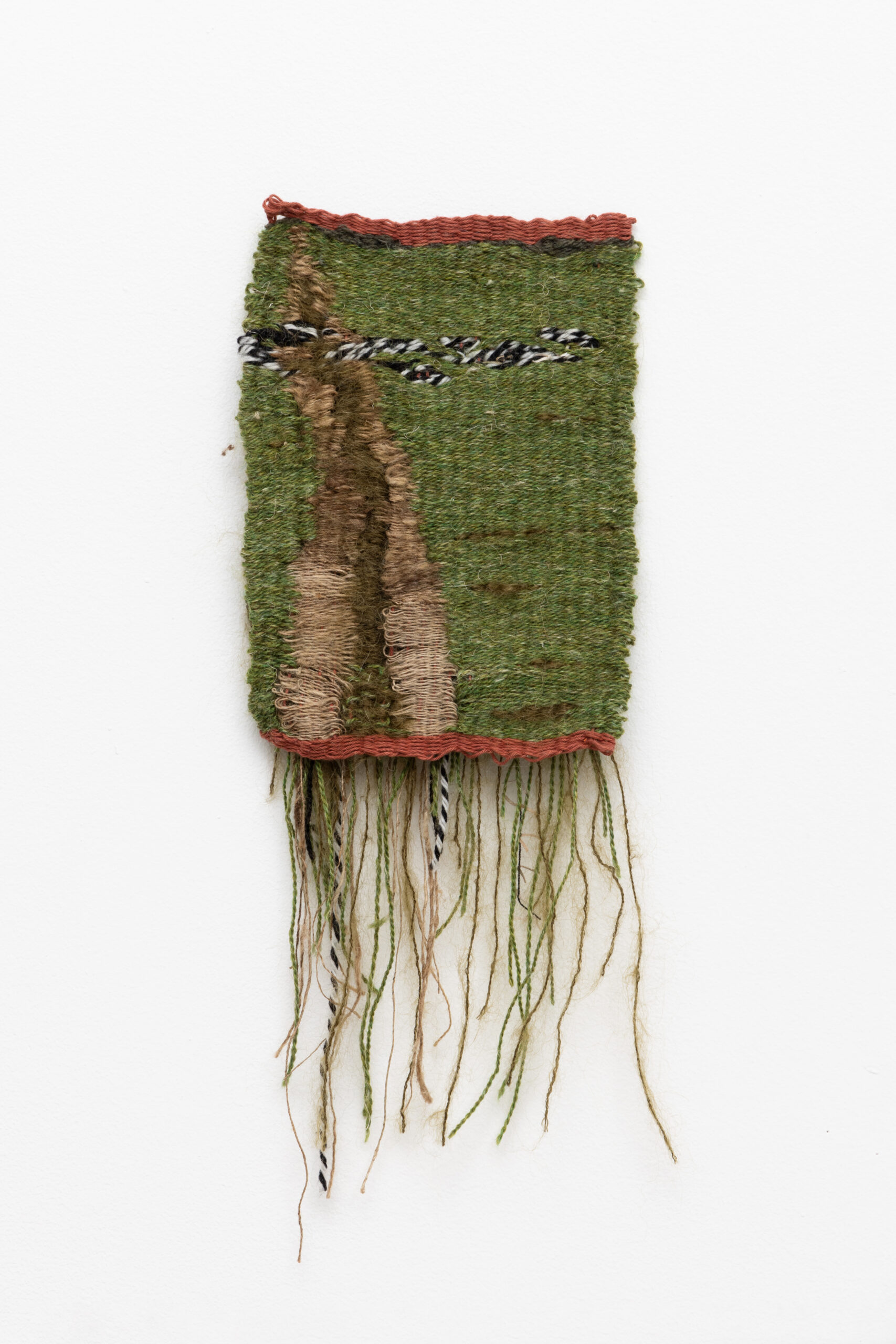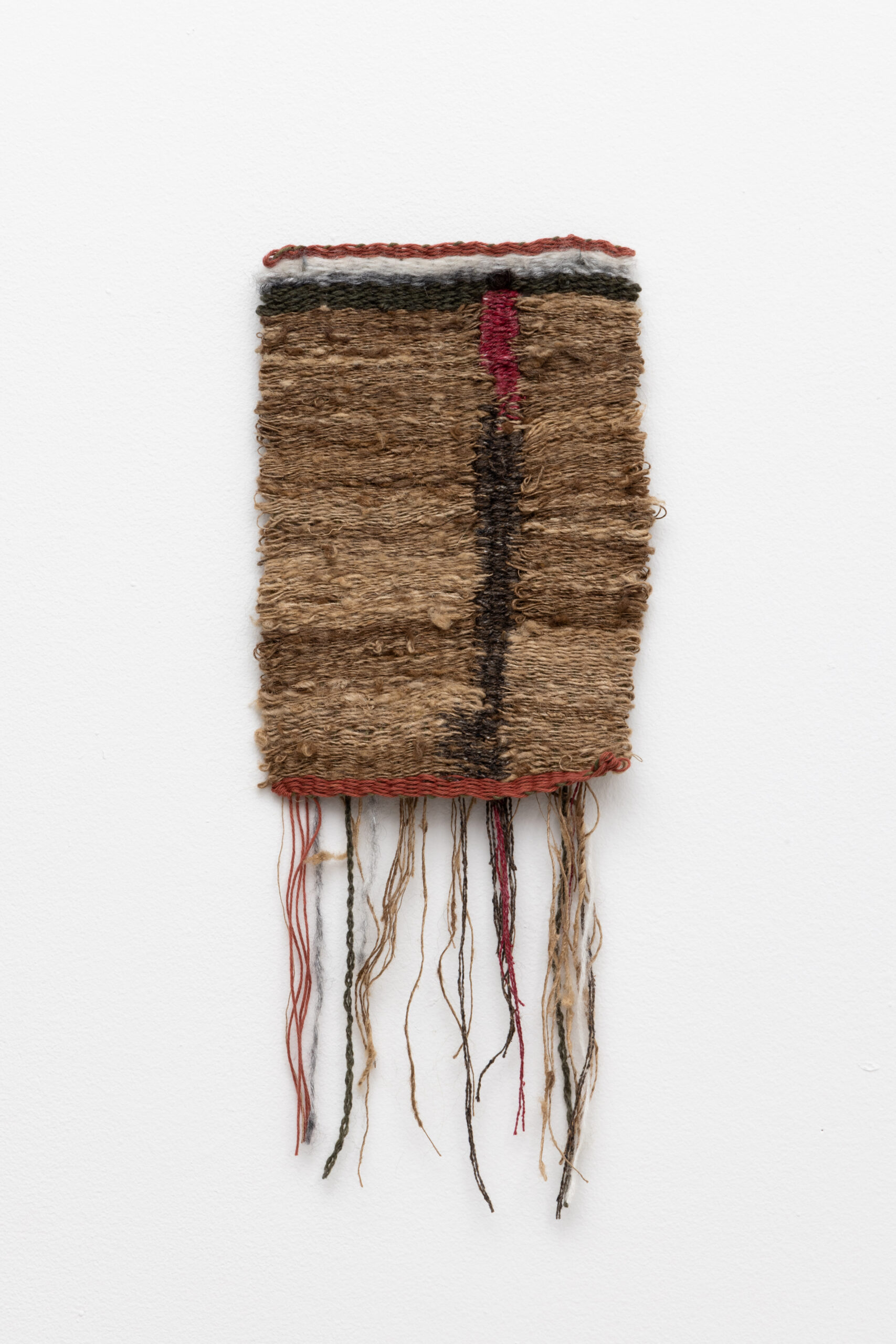WATCHING FROM SOMEWHERE CLOSE AND AT A DISTANCE
WATCHING FROM SOMEWHERE CLOSE AND AT A DISTANCE, 2022
In the spring of 2022, Toni Ross spent three weeks in Kenya, Tanzania, Rwanda, and Botswana where she was inspired by her surroundings. Working with a small loom and a backpack full of wool, Toni Ross utilized her practice to “fully absorb and keep present the magnitude and beauty of the landscape, the soul, and the humanity of a profoundly life-altering experience.”
Toni Ross’s Material Memories
Terry R. Myers
Memories are their own descendants masquerading as the ancestors of the present. —David Mitchell, Ghostwritten
Memory is a—or the—core function for all living things. It is a crucial part of what we call survival instinct, and a critical tool for navigating the totality of our experience. Humanity, of course, has the advantage of language (not that it’s never a burden), and uses communication, both spoken and written, to be seen and heard, if not understood. It is the peculiar state of memory in humans that enables artists to perform a kind of magic by imbuing materials with their own versions of memories.
Toni Ross’s new weavings are themselves material memories. Done while in Africa with what was needed to make them stuffed into a backpack, they embody extraordinary experiences by memorializing them in the “woven” sensory manner in which they occurred. By embracing the intermingling capabilities of terms like abstraction and representation, sign and symbol, and form and content, Ross reinforces the essence of weaving’s ongoing contribution to the full array of visual art. It remains a way of making that engages numerous senses simultaneously while also manifesting its structure and support as it proceeds. That, in our current transient moment of the virtual and digital, is potent.
Ross’s title for this exhibition, “Watching From Somewhere Close and at a Distance,” reinforces the seemingly incongruous yet completely familiar ways in which experiences can be in more than one place at once. (It brings to my mind Frank O’Hara’s wonderful title “Standing Still and Walking in New York.”) The titles of each work provide poetic clues to the specifics of what Ross experienced—with A Quick Last Chance to Memorize the Sky especially identifying the wonder and joy of its goal— attaching each work to its own memory, or, better yet, set of memories.
It is self-evident that each of Ross’s works in this exhibition are a set of weavings,, triptychs. Keeping in mind the important aspects of this format as it has been used in contexts that are spiritual in nature (I would suggest that this is a poignant echo in these works), the implications of it here are varied and far-reaching. Three of pretty much anything resists the dialectical, the pressure to make a choice, even if arbitrary, between any two things. Instead the choices within each triptych remain fluid, not unresolved, but open. It is possible to consider each panel as a distinct memory within each overall experience, a perception that is supported by the actual physical diversity of the fibers not only within each panel but across all three.
The size of these works matters a great deal. My opportunity to hold the three parts of Where Wild Dogs Roam in my outstretched hand one at a time informed how I would then see them on a wall. Each contains a remarkable range of tactile information that holding them made tangible. That that tangibility is intensified when looking at them demonstrates Ross’s significant ability to maintain the integrity of the “actual size” of their materials while pictorially creating expansive vistas. Closeness and distance, then and now. And while remaining articulations of landscapes that are themselves other landscapes, there is something about the size that enables the work to incorporate the intimacy of portraits.
Ross has a deep interest in language that she has made clear and impactful across the full range of the work that she produces. In the case of these weavings, it is not accidental that their size and format brings to mind semaphores (signal flags, for example) that are used to communicate across long distances usually by the specific movement of their positioning. While in no way as abstract or graphic as signal flags, Ross’s weavings are memory signals. Having finally made my way this past year through the journey of Marcel Proust’s In Search of Lost Time, I find myself in the middle of the last volume (Finding Time Again) while first experiencing what I can now call (after Proust) the “extra-temporal joy” of Ross’s weavings. Proust’s narrator discovers, after a long life of not writing, what has to happen to memories in order that they be able to inspire art: transformation, liberation, and the present.




